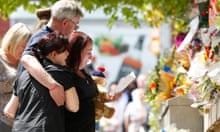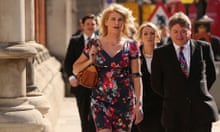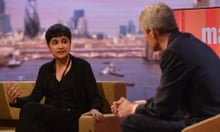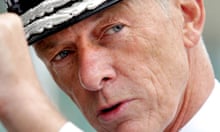The Woolwich killing, as endured many times on a screen near you, was sickening, repugnant, despicable. Standard adjectives of revulsion don't do it justice. But it has also begun to push the debate about terrorism, its portrayal and its coverage, forward in unexpected ways – beyond the old "oxygen of publicity" territory as charted by Margaret Thatcher into a more political world where the oxygen of hysteria rules.
The argument began in familiar ways the moment ITV got its smartphone video of the man with bloody hands, ranting. To show or not to show? Sky News sat this latest dilemma of "citizen journalism" out, but the impetus to screen and to publish elsewhere was huge. And, of course, that was right, as well as inevitable. Of course TV news and print front pages should have shown the full horror of the killing. There's no point whatsoever in deodorising such coverage in case people of a nervous disposition are watching. There's no point flooding south-east London with police and not saying why. If we want slaughter like this to be seen for what it is, we have to be shown clearly what it leads to.
But then the second-phase problems begin. Was Woolwich worth seven pages of coverage, as the Mail decided, or five (the Guardian) or four (the Times)? Was it, concomitantly, worth David Cameron jetting back from Paris, Barack Obama issuing White House denunciations, Frank Gardner providing full security cover and Newsnight going into discussion overdrive? As day one turned to day two, moreover, the coverage swelled rather than subsided. The Mail moved up to 13 pages, with added columns. The Mirror had a new video to unleash. There was a flurry of wrath about what MI5 might or might not have known – and, in any case, hadn't done.
Where was the beef, though? Sir Max Hastings – under a Mail headline about the "enemy within that hates our tolerance" – claimed that the "avalanche of publicity" was inescapable, but added: "We do not yet know whether they acted alone, or were members of a terror group". That truth can be put even more baldly. We don't know much at all. We can call killers "lone wolves" or "random nuts". We can summon supposed experts from Washington DC to Broadcasting House. But the "fact" that would give this story its overwhelming salience has to be proven links to some greater, still more threatening conspiracy.
Without that connection, this murder, however horrible, could just as easily belong in a south London chronicle of drug-related killings that sees children die month after month with barely a tremor on page 92. Young men become deranged or desperate: they shoot or stab: they are buried almost in silence. That is a mundane story, staled by bleak repetition. What, apart from the videos and the play-acting, makes Woolwich different? Not just the pictures on screen or the images on newsprint, but the politicians and security panjandrums rowing in behind as though the Twin Towers and Woolwich barracks were somehow one.
Simon Jenkins put it starkly in the Guardian. "It is this echo chamber of horror, set up by the media, public figures and government, that does much of terrorism's job for it. It converts mere crimes into significant acts. It turns criminals into heroes in the eyes of their admirers. It takes violence and graces it the terms of political debate." And, he might have added, it gives the nuts on the other side a reason to play their games of retribution, too.
Here's the next question, then, for urgent examination. Not should this or that footage have been shown and risked some nightmares, but what does it mean? What, if anything, lies beneath? I edited a paper through the long, awful years of Irish terrorism, from Armagh to Brighton seafront. There was, for the most part, a feeling of steady resolution in print or in parliament, a grounded balancing of threat and response. Was that because nobody could stream the video – or because, pre 9/11, we hadn't caught the hysteria bug?
■ Wolf Blitzer of CNN is interviewing a young mum (with toddler) amid the debris of Moore, Oklahoma. She's lucky to be alive, isn't she. "I guess you gotta thank the Lord, right?" A mumbled response. No, come on. "Do you thank the Lord? For that split-second decision [that saved you]"? The mumbling turns more informative. Actually, says young mum, I'm an atheist.
And, as the Columbia Journalism Review dourly adds, sometimes there are no uplifting stories or silver linings on offer. Sometimes life and news is just grim stuff happening.





